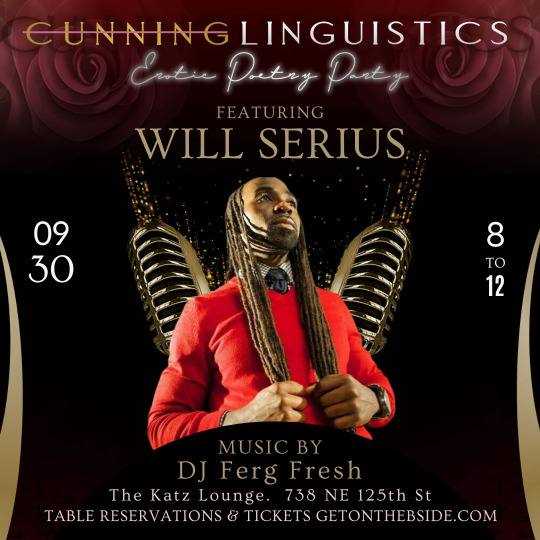#linguistcs
Explore tagged Tumblr posts
Text
Anniversaries of the Day
dravolve (adj) [ˈdrævɑlv]
dragons evolving [ˈdrægənz ɪˈvɑlvɪŋ]
A new dravolve album is coming!
Word, added: 31/12/2021 by @xpedition-dragons
Happy 3rd anniversary!
…………………………………………………………….
radinactive (adj) [ˈreɪdɪˈnæktɪv]
inactive Radioactive song [ɪˈnæktɪv ˌreɪdioʊˈæktɪv sɔŋ]
This all time song is really radinactive.
Word, added: 31/12/2021 by @xpedition-dragons
Happy 3rd anniversary!
…………………………………………………………….
Full Firebreathonary
#anniversaries of the day#words#entry of the day#firebreathonary#imagine dragons#firebreather flamily#evolve#radioactive#firebreathers#flamily#fandom#dictionary#anniversary#word#album#song#spread the words#linguistcs#languages#linguist tumblr#language tumblr#lingblr#langblr
3 notes
·
View notes
Text
The October 2023 Issue of Speculative Grammarian
The editors and publishers of Speculative Grammarian are pleased to announce that another issue of our esteemed journal is now available. This issue offers many excellent articles, including some, uh, timely musings on large language models from our Editor-in-Chief, a wind-breaking... no, wait... breath-taking introduction to the explosively burgeoning field of Flatu-linguistics, and a happy little diversion for you at your next academic conference: a conference-themed treasure hunt!—along with the usual collection of letters from our readers, breaking news, limericks and other poetry, serendipitous fieldwork, linguistickish puzzles, and more...
8 notes
·
View notes
Text
Being a linguist means starting random language courses on Tuesday night.
0 notes
Text
hey so i was looking at french idioms/expressions for reasons and came across a. fun thing. that i didnt know about!

...

ME WHEN I FUCKING GET YOU
#linguistc brain has been engaged. run#woe startiming be upon ye#in stars and time#isat spoilers#surely theres something to be said about the choice of using this idiom and how its usually (supposedly) used for food#juxtaposed with food and consumption as a theme in the game. teehee#im such a huge fan of this. i never thought twice of the possiility of this being an idiom. i wonder what else is out there in the text
120 notes
·
View notes
Text
So there’s this weird construction in Japanese where they use the ga particle, which normally marks the nominative, to mark the object of a verb. Like you’ll say X no ki ga suru to mean something “gives the feeling of X”, but the literal translation of the phrase is “the feeling of X does”. Or there’s a scifi magazine called SF ga Yomitai, which idiomatically means “We want to read scifi”, but literally actually says “scifi wants to read”.
I wonder…is that a form, or perhaps a vestige, of the symmetrical alignment system as found in the neighboring Austronesian languages? Only instead of marking the verb with a different voice affix, they just mark the noun with a case-particle which means the opposite of what it normally does?
#linguistics#unfortunately japanese linguistics (like korean linguistcs) mostly derives from chinese#and chinese works very differently from both#see also how traditional korean phonological analysis COMPLETELY ignores that it's moraic#(japanese lucked out because its script was based on the indic ones except the letter forms)#(sanskrit's syllable-timed accent structure works similarly to morae except in a couple of instances)#japanese and korean are in a similar position to finnish and hungarian having their postpositions interpreted as cases#because the afro-asiatic and indo-european languages that all european linguists trained on use PREpositions
8 notes
·
View notes
Note
Would like to hear more about the black Buffy au 👀
okay so like. There’s a lot to say about it , because it’s ultimately a part of my whole buffy rewrite/ redesign/(modern?) au (which is both fixing stuff I’m bothered with and a way to collect a bunch of head canons and just be more free with these characters). Tho I do also just see her as black at this point and draw her as it even if it’s not directly related to this au.
I got caught up in it and it’s all long so it’s all under the cut
it started with me drawing her as black once, I think it was prompted by a TikTok of someone who was giving heavy buffy vibes. But when I did, it really stuck with me. These are for various reason. One of the main ones, honestly? Racism in this show.
Like I get that it was the 90s but that doesn’t excuse it. There are obviously a lot of examples, the lack of characters of colour being a big one. But Buffys racism towards Kendra is another one, as well as the first slayer only communicating through Tara, a white woman in restless. The way they talk about Romani culture and people isnt good either (and something I’ve been working on how you can make the story work still), neither is ampata and def more examples I can’t think of now.
but it isn’t just about that, and it’s not just about representation. But rather the concept of buffy the vampire slayer itself. The idea of a woman who always is the one hunted and killed in horror movies turning around and just killing all the monsters. Yeah this fits a blonde woman but it sure also fits a black woman. (another part of this is people underestimating buffy, both her enemies but also the people around her. They think she’s stupid, that she’s not strong etc. When she very much isn’t. This is yet again something that while fitting the stereotypes of a blonde woman, but also fits, a lot better today too, with a black woman. Or any woman of colour. To point out an obvious of example of this, we for example have Annabeth Chase in Pjo. Who’s intelligence and capability was underestimated in the books because she was blonde, but makes even more sense with her being black)
but onto the fun stuff!!! Idk exactly whattt you wanted anon but I’m giving you some insights into what I’m working on on and off right now. So Buffys not the only one getting redesigned with this, obviously her family, Dawn and Joyce’s appearances are gonna change. But other characters too, this both being connected to what I said about head canons, but also Xander for examples prob gonna change a bit, he’ll still be a brunette, probably the same height and similar build but he won’t look a lot like Nicholas Brendon. This is because well. I want him to look like a kid!!! All of them, while they’re teens I want them to look like it, and hopefully if my art capabilities go that far, that they look visibly older by the end of it.
this au is my baby so I’m gonna share some random notes of like character design changes.

This is one of those very affected by hcs and personal preferences. A lot changes about willows appearance, she’s a bit taller(I want her to look too tall for herself, she’s all awkward, doesn’t look like she fits in her body), she has freckles (she’s ginger), there will be some changes on her body from magic (and other injuries but lots of magicks stuff, it’s reminders, SCARS) aND her hairs naturally curly but she straightens it, at least in early seasons (this is like 100% personal preference, but it’s also like…. I have things that fit and I wanna explore with it….) and so forth.


Anyas pretty similar because I just think Emma fits real well but she’s less.. human. I have a bunch and more to go in vengeance demon lore but I want her to be Different than human, having been a vengeance demon Changes You. Her ears are pointed (great for expressions, also applies to vampires), she has goat eyes (classic demon move, also fits the Almost Human thing.), her teeth are pointy (it’s fun, she’ll naw your arm off if you steal)

As a final example, that’s actually related to the black buffy aspect of the au. Drusilla. She’s also black. This design is pretty recent, and was created by me both because I wanted to explore the concept of different ways to convey her vibe, but also, and mainly, because she’s a buffy parallel. History wise there’s some things to work out with it but it’s def a design I’m stuck with at this point. (She is supposed to parallel buffy in every way, sharp edges against soft curves). Also she’s really fucking tall. (Taller than spike, which is the most important part of it)
also bonus, given about the whole modern? Au Aspect of it

#Not sure if this is exactly what you meant anon but 8 welcome the opportunity to talk about this au#Cause it’s like all I think about when it comes to buffy#The logistics are weird but who gives a fuck#Vics btvs au#I need a better name#btvs rambles#pzyii answers#Black buffy#Black buffy au#It’s not the name of the whole thing but it’s also yk a thing so#btvs#Buffy summers#willow rosenberg#anya jenkins#You KNOW anya will be speaking and swearing in Swedish#I am Swedish 8 have a golden opportunity here#(Oh you’re interested in the linguistcs of it and vengeance demon lore? Yeah I’ve got that mostly figured out)#Drusilla#buffy the vampire slayer#My aus
19 notes
·
View notes
Text
Nontraditional houses to haunt: family line of nobles, legislative assembly, portion of the sky (astrology), part of a restaurant (front or back), specialty dish at a restaurant, coffee shop, music genre, casino, place of worship, publishing business, the audience at a theater
9 notes
·
View notes
Text
Umberto Buccioni would watch mouth agape, clutching the phone in his hands.
actually THIS is the only good tiktok
#I'm giving a lecture to my friends AH class in a month and now everything is turning back into a lesson plan#like I'm a medievalist but doing stuff with modern/postmodernism is so much easier bc you dont have so much context to supply#the 'transcript' here grafts pretty nicely onto Joseph Kosuth's chair piece and noting the linguistc turn of the 60's and 70's#which also has mirrors (although without the neuroticism of the 1900's) with book arts of the 700-1000's ehh im squinting my eye there#i mean#its platonism#medieval shit
129K notes
·
View notes
Text
if you gave me enough cocaine i bet i could solve linear a
#this is not true it is what we in the field of linguistcs call ''a joke''#im so fucing tired i havent slept in like thre days#original
1 note
·
View note
Text
I like to think that Spamton stole his linguistc flourishes (using brackets for stylized interjections) from Tenna. I just think it fits his character, like how he stole his eccentric appearance in part from Swatch.
#deltarune#spamton#spamtenna i guess if you squint and tilt your head to the side.#i just think its interesting how so much of his character is thrifted from others#not ocs
12 notes
·
View notes
Text
IT's CUNNING LINGUISTCS TIME
We Have Been Building Up To This One. Make Sure You Are In The Building For Our First Feature Of The FALL, And Our Last Night Of $3XTember IT’S A GROWN FOLKS POETRY PARTY !!!! Register on Eventbrite

View On WordPress
#Black Miami#bside#cunninglinguistics#florida poetry#Miami#Miami Nights#miami open mic#moving to miami#my miami#new to miami#poema#poetry#spoken word
0 notes
Text
you should rename yourself Dr-official-linguistcs-post
for funsies
did people miss that i'm a doctor? i have a phd in linguistic anthropology. i spent 7 years in grad school and wrote/defended a dissertation. i've got the stupid hat to prove it
1K notes
·
View notes
Text
MAGICAL LECTURE
How can a lecture include knowledge that is both entertaining or entertaining and attractive, as well as educational? Linguistics is a course that covers all of these characteristics, and we all know why. We comprehend how our language is formed, how strong speech may be generated with sentences built by words, and I am sure we are all curious about where these words or sentences originate from, how they are formed, and how they impact the meaning. When it comes to the structural and semantic components of this course, as well as its usefulness to the student, we can claim that it contributes a lot.
First of all, it aims to explain to the student what linguistics and its sub-branches are. Then it continues with the same morphology with the formation and examination of the words at the bottom of the elements that make up the sentence. Afterwards, it examines the structure of compound words in English while dealing with where words come from in English. After the study of word formation, there are studies on the pronunciation of the word and it deals with the phonetic alphabet. It attempts to show you the vowels and consonants in the English alphabet, and also makes comparisons between letters in English and other languages. The phonology in English is as significant as the word order in this lesson because if we know the phonetics of the letters, we will pronounce the word properly. After the phonology, it examines the syllable structure and syllable types of these words and then investigates the pronunciation and structure of compound words in English. We can exemplify to the compound words such as toothbrush, headache, sailboat, sunflower, backbone, greenhouse, jellyfish, lighthouse, wholesale, and scapegoat.
The journey that starts with the word expands with the sentence, thus, the sentence structure is examined along with the syntax. Looking into word order in English, this course also compares diversity among other languages. Eventually, a study is made on the basic elements of clauses and phrases in English. All of the previous researches are concerned with the structure of sentences and the words that comprise them. When we analyse at this lesson from a semantic perspective, we can see how it deals with language rather than sentences, words, or phonetics. Linguistics which deals with the various variations of the language examines the factors that change the variety in the language. These factors can be ethnic, social, regional, or socioeconomic. It focuses on languages that have multiple language features such as creole and pidgin, which are formed from the different uses of a language and the interaction of formations between other languages. While researching the history of language, it also investigates its existence in the world. As we know, some languages are in danger of extinction and some have already been removed to the dusty shelves of history and are no longer used today. It looks at closely why languages disappear and tell the measures to be taken to prevent them from disappearing.
In linguistics, the subject of meaning is divided into semantics (semantics) and pragmatics (pragmatics). Some definitions of semantics exclude context, claiming that it is exclusively concerned with the meaning of the phrase, word groups, and words independent of context. Language users, use situations, and objectives are not considered in these definitions. The link between the thing and its symbolic design is emphasized, as is the abstract development of meaning in the mind. Pragmatics, on the other hand, is viewed as meaning in context or usage, stressing that it is concerned with the meaning of language employed in a context. Syntax is concerned with the order relationship between signs; semantics is concerned with the connection between the sign and its meaning; and pragmatics is concerned with the connection between the sign and the one who sees and understands it. With this reasoning, it is evident that syntax deals with the order, order, and order of language symbols, semantics deals with the meanings of language symbols, and pragmatics deals with the connection of language symbols with users. While this viewpoint constantly correlates pragmatics with context and meaning in usage, it defines semantics by omitting context. The notions of semantics and pragmatics will be recast as context-centred in this study. Because semantics and pragmatics are both concerned with meaning, it may be a logical difficulty to use the term semantics, which may be the generic word for the semantic area, and the other with pragmatics.
While being concerned with language in terms of semantics, it first examines the formation of meaning in the language in detail at the level of words and sentences, then deals with the elements that make expressions in languages meaningful and correct. Semantics is concerned with the transformation/transformation of things and activities into linguistic symbols as an abstract projection of natural regularities roughly reflecting/reflecting on brain syntax. Attempting to build a theory of meaning only from projections while neglecting the specific environment that generates such projections might be seen as a very problematic point of view. Context is the most basic requirement for communication to occur. The simplest setting has the fewest persons involved. Both sides have a rudimentary understanding of the factors in this situation. There may be personal factors in some cases. Semantic communication refers to the passing and rooting of information between at least two persons. In truth, a human possesses language and communication abilities. It implies he understands root context and post context information, linguistic and communicative symbols, symbol systems, and variables that are appropriate for them. Each language's indexes, semantics, and semantics are unique. These distinctions are much more pronounced among languages belonging to different language families. Languages can become too far apart due to historical, cultural, sociological, and geographical differences. Because not all meanings of a foreign language can be learnt, thresholds of knowledge and meaning skills can be established for semantic and progressive communication. The broad framework of in-class activities may be formed by commonly used root meanings and incremental meanings in daily life, as well as their root context and Artcontext narrative. While semantics and pragmatics are the two basic domains in which meaning is dealt with, context and user are often included in the latter. The first part contains an abstracted image of the user. Instead of semantics and pragmatics, semantics is used. Semantic and incremental lexemes appear to be more acceptable as sub-units of the main term. It may be more accurate to examine both semantics and pragmatics in context rather than only associating the use dimension to pragmatics. Concurrently, context may be handled from two angles: root context and post context. Contextual information may be introduced into foreign language training, giving communication a more unique and natural shape.
In general, it does not stop counting the benefits for a student, especially for a language learner, because linguistics, which examines how a language is formed, how words are formed, and in which structures and what meanings the sentences give, clearly emphasizes everything that the student needs to learn briefly. Some researchers think that this course will force the student by highlighting the confusing aspects, but the more confusing the better, because to understand a language, it is necessary to analyse it, just like in mathematics, we encounter concepts, symbols, and even formulas, just as numbers dance and confuse in mathematics, linguistics words. If we understand the word, we understand the sentence, we understand the whole piece, and when we solve the whole piece, we can master that language. The student learns how to deal with a language since linguistics provides a lot of possibilities for this. For instance, they can understand how a word is formed and how it is pronounced. The student gains how the language is affected semantically and how the language is formed or whether it is in danger of extinction, they comprehend the relationship between language and actions; moreover, they attain the structure of the word and sentence structure, and studies the alphabet and phonetics of the language they would like to dominate. As a student, I got a lot out of this course because knowing a language so comprehensively was very useful for me, especially the pronunciation of words and seeing how some compound words were formed were effective in my speaking and I can say that I enjoyed doing comparative research with some languages. Studying sentence structure has helped me understand the whole piece, and now I can segment and understand sentences in my mind while reading some articles. Taking this fun and informative class made me feel lucky.
-Tanzmitmisblog
#writerscommunity#writers on tumblr#writer blog#writerblr#mywriting#read more#discover#literary#linguistic#linguist#linguistcs#essay#essayist#essay writing#british literature#literature#history#studywithme#studyspiration#studyblr#readblr#bookblr#books & libraries#booksbooksbooks#learning#learnenglish#student#stud earrings#from my persective#ıthink
4 notes
·
View notes
Text
The etymology of the word beer is debated. Some connect it to Germanic *bewwan (yield; barley); others assume a borrowing from Latin *biber (drink). Kroonen (2013) derives it from *beuran, a dissimilated form of *breuran, itself a derivation of *brewwanan (to brew). Here's how it evolved in five West-Germanic languages:
#etymological doublets#historical linguistics#historical linguistcs#proto-germanic#lingblr#phonology#old english#middle english#english#old frisian#frisian#old high german#middle high german#german#old dutch#middle dutch#dutch#old saxon#middle low german#low saxon#audio#video
26 notes
·
View notes
Text
“The easiest language to learn is the language you’re surrounded by”
-linguine-linguistics
#quote#language#linguistcs#learning#second language#italian#french#linguinelinguistics#germany#German
37 notes
·
View notes
Text
Hey google is there a law against throwing linguistics textbooks at people who claim the sinular pronoun ‘they’ isn’t grammatical?
1 note
·
View note